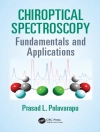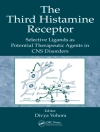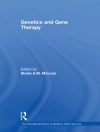Although monotherapy is generally recommended as the treatment of choice, treatment resistance of patients with psychosis, cognitive, mood and anxiety disorders represents a significant clinical problem. In this context, augmentation and combination strategies are commonly employed to address this problem. Although multiple medication use common in psychiatric practice, reasons, efficacy and safety for polypharmacy, and augmentative strategies have remained unclear. It remains unclear if there is an evidence base to support polypharmacy. Furthermore, excessive and inappropriate use of psychotropic medications has been recognized as a public health problem. This volume set is the first comprehensive, clinically oriented, reference on the multiple medication use to treat psychotic, cognitive, mood and anxiety disorders.
Inhaltsverzeichnis
1. Multiple medication use in psychiatry: How Rational Can It Be?. – 2. Receptor binding targets for antipsychotic efficacy. – 3. Drug interactions and polypharmacy. – 4. Preclinical and clinical investigation of antipsychotic polypharmacy: What is the evidence?. – 5. Should high dose or very long-term antipsychotic monotherapy be considered before antipsychotic polypharmacy?. – 6. Multiple Medication Use of Neuropsychiatry in Forensic Psychiatry: Findings from the Central State Forensic Psychiatric Hospital of Saxony-Anhalt. – 7. Antipsychotic treatment within a naturalistic trial – how are we treating schizophrenia patients in the ‚real-world‘?. – 8. A multi-target drug treatment in schizophrenia using adjunctive agents with non-D2 mechanisms of action. – 9. Antidepressants in schizophrenia – a place for them?. – 10. Stressful life events and anticonvulsant medication in psychiatric patients. – 11. Multiple medication use in somatic symptom disorders: from augmentation to diminution strategies.












